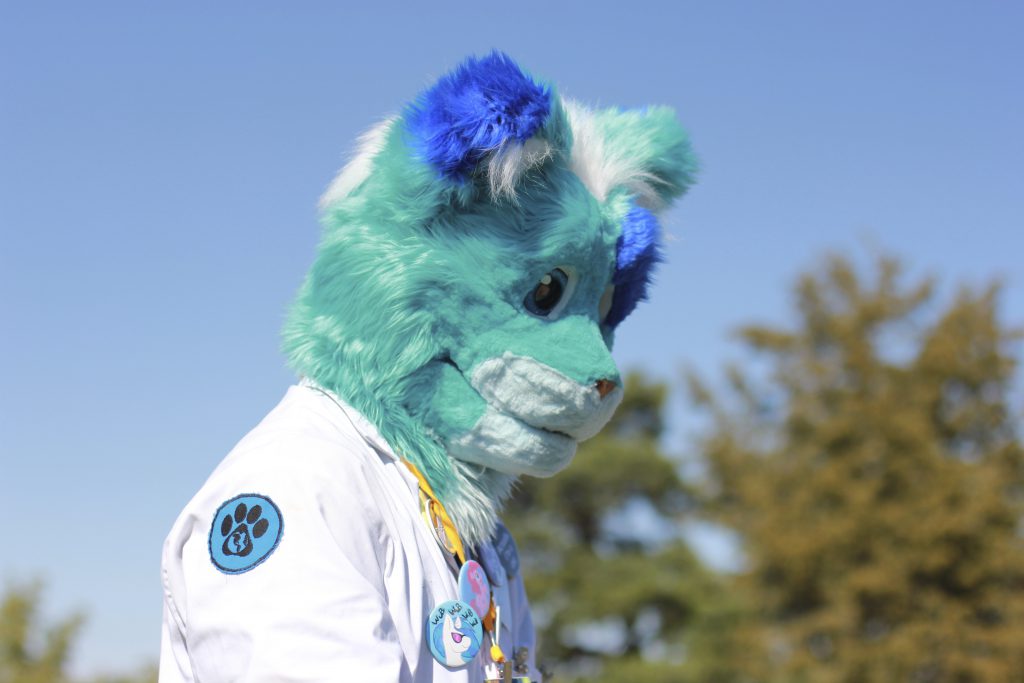
Past and present UW researchers are using data to get the truth out about a deeply stigmatized community – furries.
Renison Associate Professor and Sociological Researcher Dr. Sharon Roberts and Iowa University psychological researcher Dr. Courtney Plante are founding members of the International Anthropomorphic Project (IARP) and the website Fur Science.
They hope to make accurate information about furries available to everyone and defeat the stigmas that the community faces.
“If you’re a parent and your kid has some unconventional artwork on their computer … and you search for ‘what is a furry’ on the Internet, it can be a scary thing,” Roberts said.
But first, researchers had to gain the trust of the furry fandom.
“Many furries are very distrustful of an outsider trying to learn about their community,” Plante said. “Usually what would happen is a reporter would come in and say ‘Oh we want to study you, we want to set the record straight on furries’ and then they would run off and do a hit piece on furries.”
IARP made their research transparent and freely available through their website and book Fur Science! Now, after seven years of work, furries will approach researchers with their own questions and angles — Plante said that about 25 per cent of questions IARP researchers ask are coming from furries themselves.
Their research is also getting international attention. The Fur Science! book, a collection of five years of data on the demographics, relationships, identities, and attitudes of furries using over 15,000 participants globally, is being translated into different languages. Their campaign, Just Like You, has reached hundreds of thousands of people.
Roberts is headed to the Netherlands to present IARP’s next step, the FurScience Universal Recruitment Project. It’s a database of participants for researchers to use for their own studies on identity, transitioning into adulthood, and fantasy immersion.
Defeating the stigma
 Plante himself is a participant in furry fandom, and understands the stigma about furries well. His fursona, Nuka, is a “neon-blue kitty with a penchant for science, fuzzy things, and marshmallows,” according to his biography on the IARP website.
Plante himself is a participant in furry fandom, and understands the stigma about furries well. His fursona, Nuka, is a “neon-blue kitty with a penchant for science, fuzzy things, and marshmallows,” according to his biography on the IARP website.
Plante said that he’s “been on dates before where it’s gone perfectly fine, and then they find out I’m a furry and I’ll get a call from them later saying, ‘Oh maybe we shouldn’t hang out anymore.’ And I’m fairly certain it has to do with them looking furries up online and coming to the worst conclusions.”
 “The funny thing is, the truth about furries is that they’re actually very boring. I can’t tell you the number of times I’ve been interviewed by someone, as a furry, and they are expecting a spicy story from me and when they follow us around they find we just play video games and read web comics. What did you expect?” Plante asked.
“The funny thing is, the truth about furries is that they’re actually very boring. I can’t tell you the number of times I’ve been interviewed by someone, as a furry, and they are expecting a spicy story from me and when they follow us around they find we just play video games and read web comics. What did you expect?” Plante asked.
Furry as fandom
Though people often connect “furry” to wearing fur suits, furry fandom is actually built around a shared interest in anthropomorphic characters.
“If it’s got walking, talking animal characters in it, chances are furries will like it,” said Plante. “The liking of the media is the most universal part of the fandom. You wouldn’t say sports fans are people who wear jerseys and, in reality, only 20 per cent of furries wear fur suits.”
Like with other types of fans, their fandom isn’t a lifestyle, but something to enjoy and build friendships around. There’s also different types of fans, from those who simply view media to convention-goers.
Fursona identities
One thing that’s nearly universal among furries is the “fursona.” It’s the identity that a furry builds for themselves as a participant in the fandom.
Around 95 per cent of furries have a fursona, whether it’s an online nickname or an immersion into a different character.
Roberts said, “The creation of the fursona is central in doing what we would expect people to do in a very intentional way … the first thing you’re asked when you enter the fandom is what your fursona name is … the first thing you have to do is figure out who you are.”
That identity is often helpful for those who create a fursona. For young people, it’s a way to try out different identities in a safe way. For others, it’s the ability to be comfortable in an identity they feel they can be themselves in.
For example, the FurP enrollment shows 9-10 percent of participants identifying as something other than cisgender. According to Roberts, this is a disproportionately high demographic, and the draw of this particularly vulnerable populations should be explored further.
When Roberts asks furries, “What does the furry fandom mean to you?” they largely describe a community rooted in friendship and artwork. A small proportion of furries also indicated that the fandom saved their lives.
For more information on IARP and Fur Science, visit furscience.com.




























